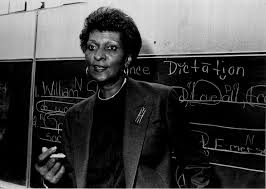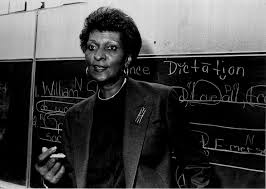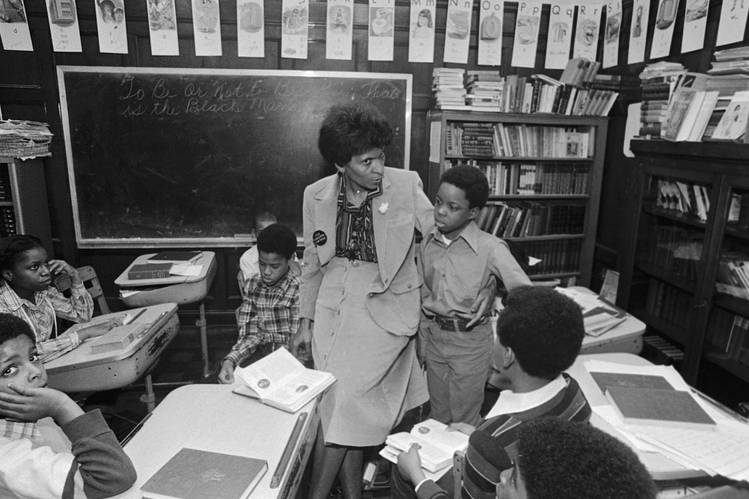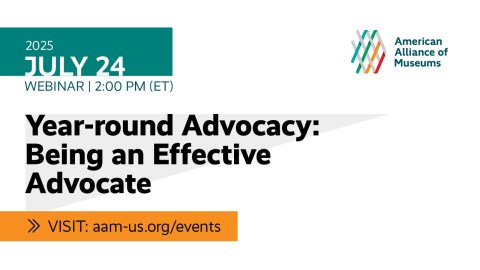
You may have met Sylvea Hollis, CFM’s project manager, at the annual meeting last spring, where she stage managed our demonstration of Google Glass in MuseumExpo. Now Sylvea’s working with me on the next steps in our exploration of the future of education (stand by for a preview of those projects next month). In today’s post, Sylvea tells us about an inspirational educator who pioneered some of the trends shaping learning today. You can follow Sylvea on Twitter @sil_ve_uh.
“To just read what is given to me in a classroom and not explore other means and not explore other connecting topics, still guarantees failure as a teacher. Learning is everywhere. I think that is the one thing that is missing in the minds of many teachers. Everything in life has knowledge attached to it, and students are just waiting to learn things.” –Marva Collins
What should the future of education look like? Who (or what, in the case of robots) will be key facilitators for reinforcing learning with students? How will the future of education differ from traditional classroom instruction?
For the past few years CFM has been exploring how museums can help shape the future of educationthrough our Blog, our annual TrendsWatch report, a national convening and a seminal report. This includes examining the contributions of educational futurists from the past and present. I believe that we can learn much from the invigorating contributions of one such teacher—Marva Collins.
 |
| Marva Collins teaching phonicsChicago Sun-Times |
Marva Collins worked as a substitute teacher in Chicago Public Schools for 14 years. When she retired in 1975, she used her pension of $5,000 to found Westside Preparatory School. She believed children in Chicago’s West Side—including her two children enrolled in an expensive private school—deserved a better quality education. Westside Prep started with four children, including Collins’ daughter, and eventually grew to serve 200 students. It was a last resort for many who had either chosen to drop out or were expelled. Collins became an overnight success when Morely Safer, the 60 Minutes correspondent, commented on her nontraditional model of teaching after visiting the school and meeting with students in 1979: “The results are astounding…alert and challenged children being pushed way beyond the boundaries most school systems set.” Fifteen years later when Safer returned to Westside, he was even more impressed after speaking with alumni and seeing the impact of Collins work.
Collin’s shrewdly chose to use private money for the initial start-up costs of Westside, giving her a measure of autonomy from the red tape of the education system. At Westside Prep, teachers got no desks and no breaks. Teacher training emphasized constant learner-focused instruction and student engagement. There were no substitute teachers in her school. When teachers were absent, students simply taught themselves and developed early skills in teambuilding and peer-to-peer learning. Collins was passionate about family and community members being equally invested in student learning and she became a leader in introducing these ideas far beyond formal traditional educational frameworks.
 |
| Marva Collins, teaching at Westside Prep in 1980
Bettmann/Corbis /AP Images
|
Collins anticipated today’s focus on multiple forms of media in a learning environment by some three decades. She used hip-hop as a teaching tool and grounded the learning process in what her students already knew. Her work prefigured the current trends of personalized learning, learner engagement and meaningful, accessible learning experiences. “To just read what is given to me in a classroom and not explore other means and not explore other connecting topics, still guarantees failure as a teacher,” she noted. “Learning is everywhere.”
Collins wanted no frills in her classroom, and this pared-down learning environment raises provocative questions as we envision tomorrow’s learning landscape.. What if we followed the course she set to the logical extreme? What if schools of the future have no classrooms at all?
Collins’ passion for teaching became so notable that President Reagan named her as a candidate for the Secretary of Education. She inspired a television movie—The Marva Collins Story (1981)—with Cicely Tyson in the starring role and Collins herself made a cameo in Princes’ “The Most Beautiful Girl in the World” video.
Marva Collins passed away this past summer, but her strategies remain timely. Learners today still struggle with poverty, varying degrees of confidence with learning, and in the case of many—illiteracy. Today’s educational futurists still grapple with the challenges Collins address, but face additional hurdle, including:
- the social and digital divide created by increasingly decentralized and specialized options for learning
- fear of failure, fostered by the current emphasis on testing, leading to an avoidance of risk-taking in curricula, teaching and organization and schools
- the growing gap between the training provided by K-12 education and employment opportunities
What current “educational futurists” do you admire, and how are they tackling these new issues? What can museums adopt and adapt from their work? Which museums are already mainstreaming these new approaches into their work? I’d love to hear from you in the comment section, below or at shollis at aam-us.org.
Recommended Reading:
Marva Collins and Civia Tamarkin, Marva Collins’ Way: Returning to Excellence in Education (New York: Tarcher, 1990)
Marva Collins, Ordinary Children, Extraordinary Teachers (Newbury Port, Mass: Hampton Roads,1992)
Marva Collins, Values: Lighting the Candle of Excellence: A Practical Guide for the Family (New York: New Star Press, 1996)








